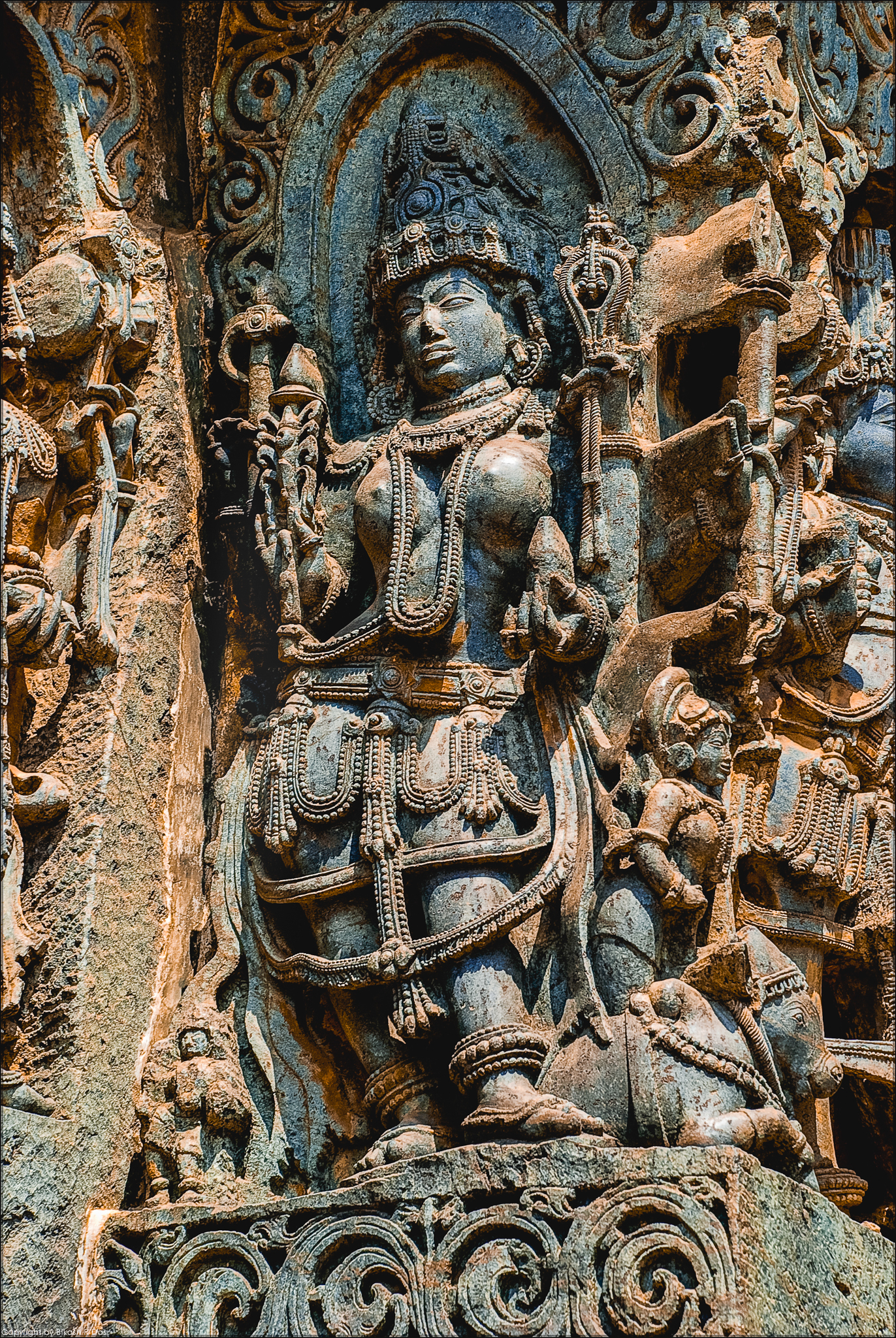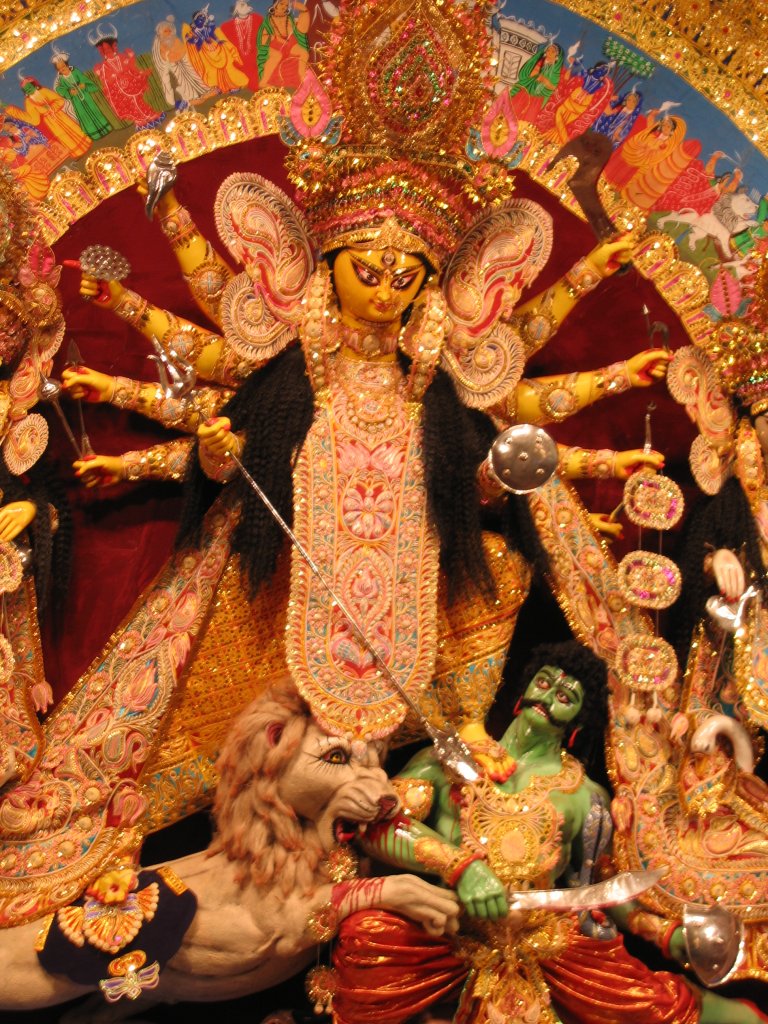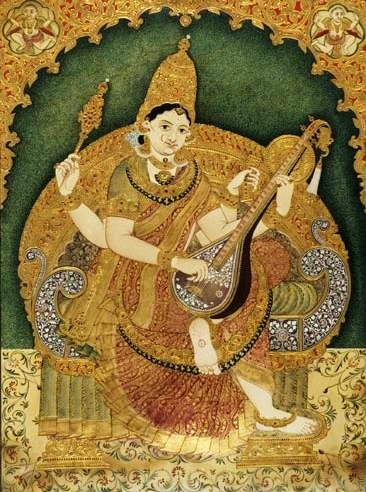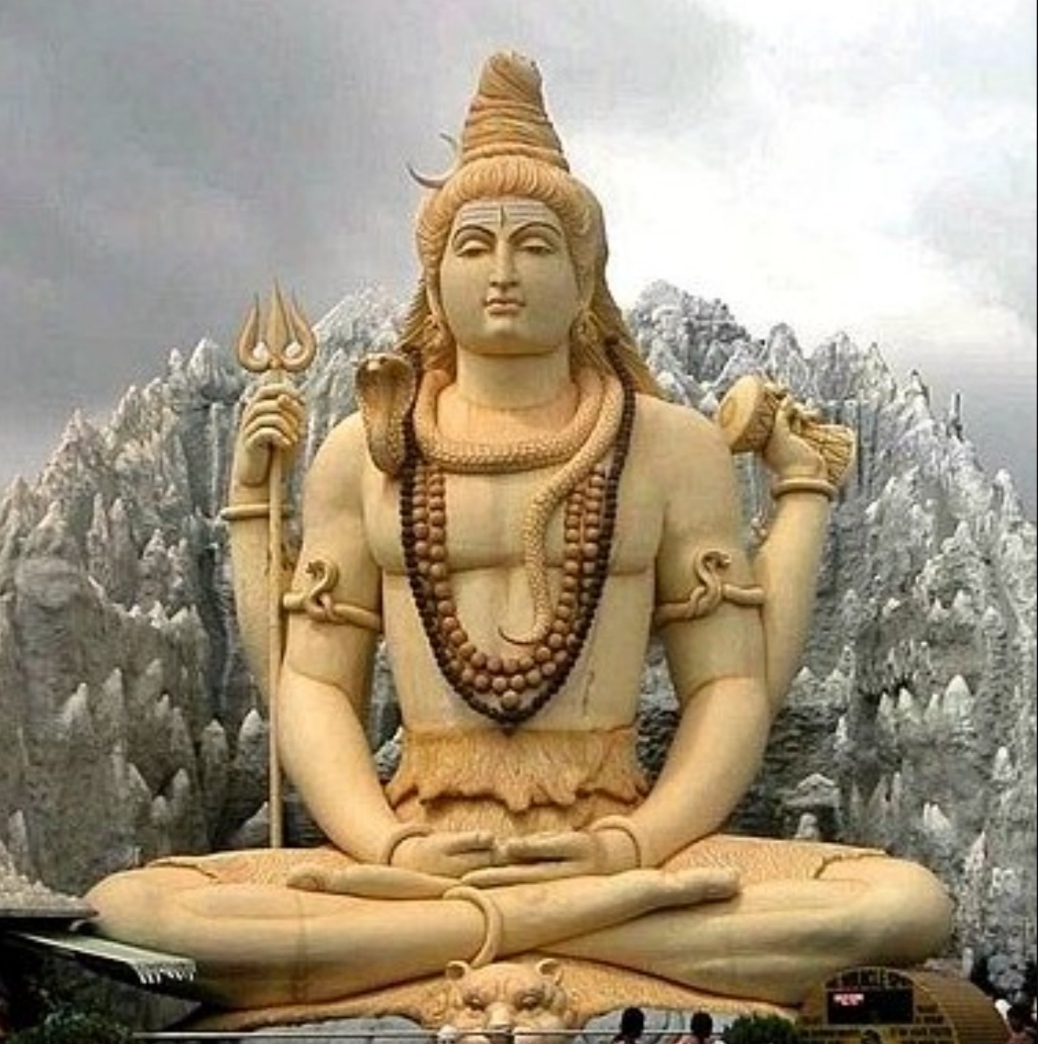|
Shakta
Shaktism () is a major Hindu denomination in which the deity or metaphysical reality is considered metaphorically to be a woman. Shaktism involves a galaxy of goddesses, all regarded as different aspects, manifestations, or personifications of the divine feminine energy called ''Shakti''. It includes various modes of worship, ranging from those focused on the most worshipped Durga, to gracious Parvati, and the fierce Kali. After the decline of Buddhism in India, various Hindu and Buddhist goddesses were combined to form the Mahavidya, a pantheon of ten goddesses. The most common forms of the Mahadevi worshipped in Shaktism include: Durga, Kali, Saraswati, Lakshmi, Parvati, and Tripura Sundari. Also worshipped are the various Gramadevatas across the Indian villages. Shaktism also encompasses various tantric sub-traditions, including Vidyapitha and Kulamārga. Shaktism emphasizes that intense love of the deity is more important than simple obedience, thus showing an inf ... [...More Info...] [...Related Items...] OR: [Wikipedia] [Google] [Baidu] |
Shakti
Shakti (Devanagari: शक्ति, IAST: Śakti; 'energy, ability, strength, effort, power, might, capability') in Hinduism, is the "Universal Power" that underlies and sustains all existence. Conceived as feminine in essence, Shakti refers to the personified energy or power of a Deva (Hinduism), male deity, often personified as the female consort of the given Hindu god. In Tantric Shaktism, Shakti is the foremost deity, akin to Brahman. In Puranic Hinduism, Shiva and Shakti are the masculine and feminine principles that are complementary to each other. The male deity is ''purusha'', pure consciousness, which creates the universe through the female creative energy of Shakti, which is ''Prakṛti, prakriti'', 'nature'. The term ''Shakta'' is used for the description of people associated with Shakti worship. The Shakta pithas are shrines, which are believed to be the sacred seats of Shakti. Etymology and overview According to the Monier Monier-Williams, Monier-Williams dict ... [...More Info...] [...Related Items...] OR: [Wikipedia] [Google] [Baidu] |
Tripura Sundari
Tripura Sundari (Sanskrit: त्रिपुरसुन्दरी, IAST: Tripura Sundarī), also known as Lalita, Shodashi, Kamakshi, and Rajarajeshvari, is a Hindu goddess, revered primarily within the Shaktism tradition and recognized as one of the ten Mahavidyas. She embodies the essence of the supreme goddess Mahadevi. Central to the Shakta texts, she is widely praised in the ''Lalita Sahasranama'' and '' Saundarya Lahari''. In the Lalitopakhyana of the '' Brahmanda Purana'', she is referred to as Adi Parashakti. The term "Tripura" conveys the concept of three cities or worlds, while "Sundari" translates to "beautiful woman." She signifies the most beautiful woman across the three realms, with associations to the yoni symbol and the powers of creation, preservation, and destruction. According to the Srikula tradition in Shaktism, Tripura Sundari is the foremost of the Mahavidyas, the supreme divinity of Hinduism and also the primary goddess of Sri Vidya. The '' Tripu ... [...More Info...] [...Related Items...] OR: [Wikipedia] [Google] [Baidu] |
Sati (Hindu Goddess)
Sati (, , , ), also known as Dakshayani (Sanskrit: , IAST: ''Dākṣāyaṇī'', lit. 'daughter of Daksha'), is the Hindu goddess of marital felicity and longevity, and is worshipped as an aspect of the mother goddess Shakti. Sati was the first wife of Shiva, the other being Parvati, who was Sati's reincarnation after her death. The earliest mentions of Sati are found in the time of the Ramayana and the Mahabharata, but details of her story appear in the Puranas. Legends describe Sati as the favourite child of Daksha, who marries Shiva against her father's wishes. Later, when Daksha organises a yajna (fire-sacrifice) in which he doesn't invite her and her husband, Sati goes to attend it, only to be humiliated by her father. She then immolates herself to protest against him, and uphold the honour of her husband. In Hinduism, both Sati and Parvati, successively play the role of bringing Shiva away from ascetic isolation into creative participation with the world. Sati's story pla ... [...More Info...] [...Related Items...] OR: [Wikipedia] [Google] [Baidu] |
Mahadevi
Mahadevi (, , IPA: / mɐɦɑd̪eʋiː/), also referred to as Adi Parashakti, and Mahamaya, is the supreme goddess in Hinduism. According to the goddess-centric sect Shaktism, all Hindu gods and goddesses are considered to be manifestations of this great goddess, who is considered as the '' Para Brahman'' or the ultimate reality. Shaktas often worship her as Durga, also believing her to have many other forms. Mahadevi is mentioned as the ''Mulaprakriti'' (Primordial Goddess) in Shakta texts, having five primary forms—Parvati, Lakshmi, Sarasvati, Gayatri and Radha—collectively referred to as ''Panchaprakriti''. Besides these, Goddess Tripura Sundari, a form of Devi, is often identified with the supreme goddess Mahadevi in Shaktism. Author Helen T. Boursier says: "In Hindu philosophy, both Lakshmi (primary goddess in Vaishnavism) and Parvati (primary goddess of Shaivism) are identified as manifestations of this great goddess—Mahadevi—and the Shakti or divine power". ... [...More Info...] [...Related Items...] OR: [Wikipedia] [Google] [Baidu] |
Parvati
Parvati (, , IPA: /Sanskrit phonology, pɑɾʋət̪iː/), also known as Uma (, , IPA: Sanskrit phonology, /ʊmɑː/) and Gauri (, , IPA: /Sanskrit phonology, gə͡ʊɾiː/), is one of the principal goddesses in Hinduism, revered as the Devi, goddess of power, energy, nourishment, harmony, love, beauty, devotion, and motherhood. Along with Lakshmi and Saraswati, Sarasvati, she forms the trinity, known as the Tridevi. From her first appearance as a goddess during the Itihasa-Purana, epic period (400 BCE – 400 CE), Parvati is primarily depicted as the consort of the god Shiva. According to various Puranas, Parvati is the reincarnation of Sati (Hindu goddess), Sati, Shiva's first wife, who relinquished her body to sever familial ties with her father, Daksha, after he had insulted Shiva. Parvati is often equated with the other goddesses such as Sati, Uma, Kali and Durga and due to this close connection, they are often treated as one and the same, with their stories frequently ove ... [...More Info...] [...Related Items...] OR: [Wikipedia] [Google] [Baidu] |
Durga
Durga (, ) is a major Hindu goddess, worshipped as a principal aspect of the mother goddess Mahadevi. She is associated with protection, strength, motherhood, destruction, and wars. Durga's legend centres around combating evils and demonic forces that threaten peace, prosperity, and dharma, representing the power of good over evil. Durga is believed to unleash her divine wrath against the wicked for the liberation of the oppressed, and entails destruction to empower creation. Durga is seen as a motherly figure and often depicted as a beautiful woman, riding a lion or tiger, with many arms each carrying a weapon and often defeating demons. She is widely worshipped by the followers of the goddess-centric sect, Shaktism, and has importance in other denominations like Shaivism and Vaishnavism. The most important texts of Shaktism, Devi Mahatmya and Devi Bhagavata Purana, revere Devi (the Goddess) as the primordial creator of the universe and the Brahman (ultimate truth and reali ... [...More Info...] [...Related Items...] OR: [Wikipedia] [Google] [Baidu] |
Saraswati
Saraswati (, ), also spelled as Sarasvati, is one of the principal Devi, goddesses in Hinduism, revered as the goddess of knowledge, education, learning, arts, speech, poetry, music, purification, language and culture. Together with the goddesses Lakshmi and Parvati, she forms the trinity of chief goddesses, known as the Tridevi. Sarasvati is a pan-Indian deity, venerated not only in Hinduism but also in Jainism and Buddhism.Ludvik (2007), pp. 1, 11. She is one of the prominent goddesses in the Historical Vedic religion, Vedic tradition (1500 to 500 BCE) who retains her significance in later Hinduism. In the Vedas, her characteristics and attributes are closely connected with the Sarasvati River, making her one of the earliest examples of a Rivers in Hinduism, river goddess in Indian tradition. As a deity associated with a river, Sarasvati is revered for her dual abilities to purify and to nurture fertility. In later Vedic literature, particularly the Brahmanas, Sarasvati is i ... [...More Info...] [...Related Items...] OR: [Wikipedia] [Google] [Baidu] |
Tantra
Tantra (; ) is an esoteric yogic tradition that developed on the India, Indian subcontinent beginning in the middle of the 1st millennium CE, first within Shaivism and later in Buddhism. The term ''tantra'', in the Greater India, Indian traditions, also means any systematic broadly applicable "text, theory, system, method, instrument, technique or practice". A key feature of these traditions is the use of mantras, and thus they are commonly referred to as Mantramārga ("Path of Mantra") in Hinduism or Mantrayāna ("Mantra Vehicle") and Guhyamantra ("Secret Mantra") in Buddhism. In Buddhism, the Vajrayana traditions are known for tantric ideas and practices, which are based on Indian Tantras (Buddhism), Buddhist Tantras. They include Tibetan Buddhism, Indo-Tibetan Buddhism, Chinese Esoteric Buddhism, Japanese Shingon Buddhism and Nepalese Newar Buddhism. Although Southern Esoteric Buddhism does not directly reference the tantras, its practices and ideas parallel them. In Bud ... [...More Info...] [...Related Items...] OR: [Wikipedia] [Google] [Baidu] |
Lakshmi
Lakshmi (; , , sometimes spelled Laxmi, ), also known as Shri (, , ), is one of the principal goddesses in Hinduism, revered as the goddess of wealth, fortune, prosperity, beauty, fertility, sovereignty, and abundance. She along with Parvati and Sarasvati, form the trinity of goddesses called the Tridevi. Lakshmi has been a central figure in Hindu tradition since pre-Buddhist times (1500 to 500 BCE) and remains one of the most widely worshipped goddesses in the Hindu pantheon. Although she does not appear in the earliest Vedic literature, the personification of the term '' shri''—auspiciousness, glory, and high rank, often associated with kingship—eventually led to the development of Sri-Lakshmi as a goddess in later Vedic texts, particularly the ''Shri Suktam''. Her importance grew significantly during the late epic period (around 400 CE), when she became particularly associated with the preserver god Vishnu as his consort. In this role, Lakshmi is seen as the ide ... [...More Info...] [...Related Items...] OR: [Wikipedia] [Google] [Baidu] |
Hinduism
Hinduism () is an Hypernymy and hyponymy, umbrella term for a range of Indian religions, Indian List of religions and spiritual traditions#Indian religions, religious and spiritual traditions (Sampradaya, ''sampradaya''s) that are unified by adherence to the concept of ''dharma'', a Ṛta, cosmic order maintained by its followers through rituals and righteous living, as expounded in the Vedas. The word ''Hindu'' is an exonym, and while Hinduism has been called the oldest religion in the world, it has also been described by the modern term ''Sanātana Dharma'' () emphasizing its eternal nature. ''Vaidika Dharma'' () and ''Arya dharma'' are historical endonyms for Hinduism. Hinduism entails diverse systems of thought, marked by a range of shared Glossary of Hinduism terms, concepts that discuss God in Hinduism, theology, Hindu mythology, mythology, among other topics in Hindu texts, textual sources. Hindu texts have been classified into Śruti () and Smṛti (). The major Hin ... [...More Info...] [...Related Items...] OR: [Wikipedia] [Google] [Baidu] |
Shaivism
Shaivism (, , ) is one of the major Hindu denominations, Hindu traditions, which worships Shiva as the Para Brahman, supreme being. It is the Hinduism#Demographics, second-largest Hindu sect after Vaishnavism, constituting about 385 million Hindus, found widely across South Asia (predominantly in South India, Southern India), Sri Lanka, and Nepal.Keay, p.xxvii. The followers of Shaivism are called Shaivas or Shaivites. According to Chakravarti, Shaivism developed as an amalgam of pre-Aryan religions and traditions, Vedic Rudra, and post-Vedic traditions, accommodating local traditions and Yoga, puja and bhakti. According to Bisschop, early shaivism is rooted in the worship of vedic deity Rudra. The earliest evidence for sectarian Rudra-Shiva worship appears with the Pasupata (early CE), possibly owing to the Origins of Hinduism, Hindu synthesis, when many local traditions were aligned with the Brahmanism, Vedic-Brahmanical fold. The Pāśupata movement rapidly expanded through ... [...More Info...] [...Related Items...] OR: [Wikipedia] [Google] [Baidu] |
Hindu Denomination
Hindu denominations, ''sampradayas'', traditions, movements, and sects are traditions and sub-traditions within Hinduism centered on one or more gods or goddesses, such as Vishnu, Shiva, Shakti and so on. The term ''sampradaya'' is used for branches with a particular founder-guru with a particular philosophy. Hinduism has no central doctrinal authority and many practising Hindus do not claim to belong to any particular denomination or tradition. Four major traditions are, however, used in scholarly studies: ''Vaishnavism'', ''Shaivism'', ''Shaktism'' and ''Smartism''.Lance Nelson (2007), An Introductory Dictionary of Theology and Religious Studies (Editors: Orlando O. Espín, James B. Nickoloff), Liturgical Press, , pages 562–563 These are sometimes referred to as the denominations of Hinduism, and they differ in the primary deity at the centre of each tradition.SS Kumar (2010), Bhakti — the Yoga of Love, LIT Verlag Münster, , pp. 35–36. A notable feature of Hindu denom ... [...More Info...] [...Related Items...] OR: [Wikipedia] [Google] [Baidu] |











